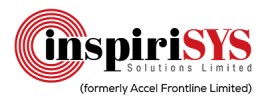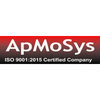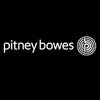Filter interviews by
Perpetuuiti Technosoft Services Interview Questions and Answers
10 Interview questions
A trigger is a special type of stored procedure that automatically executes when an event occurs in the database.
Triggers are used to maintain the integrity of the database by enforcing business rules or cascading changes.
They can be set to execute before or after an INSERT, UPDATE, or DELETE operation.
For example, a trigger can be used to update a related table when a record is inserted into another table.
Boxing is the process of converting a value type to a reference type, while unboxing is the opposite process.
Boxing is implicit, unboxing is explicit
Boxing creates a new object on the heap, unboxing retrieves the value from the object
Boxing is slower than unboxing
Example: int num = 10; object obj = num; // boxing
Example: int num = (int)obj; // unboxing
Managed code is code that is executed by the Common Language Runtime (CLR) while unmanaged code is code that is executed outside of the CLR.
Managed code is written in high-level languages like C# or VB.NET and is compiled to Intermediate Language (IL) which is then executed by the CLR.
Unmanaged code is written in languages like C or C++ and directly compiled to machine code which is executed by the operating syste...
To make a partition, you need to use a disk management tool or command prompt.
Open Disk Management tool or Command Prompt
Select the disk you want to partition
Right-click on the unallocated space and select 'New Simple Volume'
Follow the wizard to specify the size and format of the partition
Alternatively, use the 'diskpart' command in Command Prompt to create a partition
Linux commands are used to interact with the operating system and perform various tasks.
ls - list directory contents
cd - change directory
mkdir - make directory
rm - remove file or directory
cp - copy file or directory
mv - move or rename file or directory
grep - search for a pattern in a file
chmod - change file permissions
sudo - execute a command as superuser
apt-get - package manager for Debian-based systems
Abstract class is a class that cannot be instantiated, method overriding is when a subclass provides a specific implementation of a method in its superclass, dictionary is a collection of key-value pairs, dispose is a method used to release unmanaged resources.
Abstract class: Cannot be instantiated, can have abstract methods. Example: abstract class Shape { public abstract void Draw(); }
Method overriding: Subclass...
Cursor, index, and trigger are database concepts used in SQL. Cursors are used to retrieve data row by row, indexes are used to improve query performance, and triggers are used to automatically perform actions when certain events occur.
Cursor: Used to retrieve data row by row. Syntax - DECLARE cursor_name CURSOR FOR SELECT column1, column2 FROM table_name
Index: Used to improve query performance by creating a data ...
LVM stands for Logical Volume Manager. It is a tool used in Linux to manage disk space by creating logical volumes.
LVM allows for dynamic resizing of logical volumes without the need to unmount the file system
It provides a layer of abstraction between the physical storage devices and the file systems
LVM can be used to create snapshots of logical volumes for backup purposes
It is commonly used in enterprise environm...
There are hundreds of Linux commands, each with its own purpose and syntax.
Basic commands: cd, ls, mkdir, rm, cp, mv, touch, cat, echo, pwd
File manipulation: grep, sed, awk, sort, cut, paste, diff, tar, gzip
System management: ps, top, kill, systemctl, service, ifconfig, ping, netstat
User management: useradd, userdel, passwd, su, sudo, chown, chmod
Networking: ssh, scp, ftp, telnet, curl, wget, nslookup, dig, tracer...
A server is a computer program or device that provides functionality to other programs or devices, known as clients.
Types of servers include file servers, web servers, mail servers, database servers, game servers, and application servers.
File servers store and manage files for multiple users on a network.
Web servers host websites and web applications.
Mail servers handle email communication.
Database servers manage ...
Perpetuuiti Technosoft Services Interview Experiences
13 interviews found
I applied via Naukri.com and was interviewed in Mar 2024. There were 2 interview rounds.
(3 Questions)
- Q1. What is Manage and unmanaged code
- Ans.
Managed code is code that is executed by the Common Language Runtime (CLR) while unmanaged code is code that is executed outside of the CLR.
Managed code is written in high-level languages like C# or VB.NET and is compiled to Intermediate Language (IL) which is then executed by the CLR.
Unmanaged code is written in languages like C or C++ and directly compiled to machine code which is executed by the operating system.
Man...
- Q2. Boxing vs unboxing
- Ans.
Boxing is the process of converting a value type to a reference type, while unboxing is the opposite process.
Boxing is implicit, unboxing is explicit
Boxing creates a new object on the heap, unboxing retrieves the value from the object
Boxing is slower than unboxing
Example: int num = 10; object obj = num; // boxing
Example: int num = (int)obj; // unboxing
- Q3. What is Trigger?
- Ans.
A trigger is a special type of stored procedure that automatically executes when an event occurs in the database.
Triggers are used to maintain the integrity of the database by enforcing business rules or cascading changes.
They can be set to execute before or after an INSERT, UPDATE, or DELETE operation.
For example, a trigger can be used to update a related table when a record is inserted into another table.
(2 Questions)
- Q1. What is Cursor, index, trigger. Write syntax
- Ans.
Cursor, index, and trigger are database concepts used in SQL. Cursors are used to retrieve data row by row, indexes are used to improve query performance, and triggers are used to automatically perform actions when certain events occur.
Cursor: Used to retrieve data row by row. Syntax - DECLARE cursor_name CURSOR FOR SELECT column1, column2 FROM table_name
Index: Used to improve query performance by creating a data struc...
- Q2. What is abstract class, method overriding, dictionary,dispose. Write instance or syntax
- Ans.
Abstract class is a class that cannot be instantiated, method overriding is when a subclass provides a specific implementation of a method in its superclass, dictionary is a collection of key-value pairs, dispose is a method used to release unmanaged resources.
Abstract class: Cannot be instantiated, can have abstract methods. Example: abstract class Shape { public abstract void Draw(); }
Method overriding: Subclass prov...
Interview Preparation Tips
Second round is face to face and it is deep in technical. You are able to write syntax of every single thing in SQL like user defined function, index, cursor.
Skills evaluated in this interview
(1 Question)
- Q1. Basic manual testing ques, Selenium and java
I applied via Naukri.com and was interviewed in Jan 2023. There were 2 interview rounds.

(2 Questions)
- Q1. What is lvm What did you you about linux
- Ans.
LVM stands for Logical Volume Manager. It is a tool used in Linux to manage disk space by creating logical volumes.
LVM allows for dynamic resizing of logical volumes without the need to unmount the file system
It provides a layer of abstraction between the physical storage devices and the file systems
LVM can be used to create snapshots of logical volumes for backup purposes
It is commonly used in enterprise environments ...
- Q2. How to make partition
- Ans.
To make a partition, you need to use a disk management tool or command prompt.
Open Disk Management tool or Command Prompt
Select the disk you want to partition
Right-click on the unallocated space and select 'New Simple Volume'
Follow the wizard to specify the size and format of the partition
Alternatively, use the 'diskpart' command in Command Prompt to create a partition
Interview Preparation Tips
Skills evaluated in this interview
I applied via Referral and was interviewed in Jan 2023. There were 3 interview rounds.

(2 Questions)
- Q1. Rto rpo disaster Recovery DR drilL
- Q2. Os db network
(1 Question)
- Q1. Basic knowledge of work experience
I applied via Approached by Company and was interviewed before Feb 2023. There were 2 interview rounds.
(1 Question)
- Q1. Tell me about yourself
(1 Question)
- Q1. Related our resume and technical skills
I appeared for an interview before Mar 2024.
Related input was provided and output was expected
Technical level as coding
(2 Questions)
- Q1. Salary Discussion
- Q2. Regardung Regarding company norms and salary package
I applied via Referral and was interviewed before Jan 2024. There were 2 interview rounds.
Giving data in inputs and processing the data manipulation
(1 Question)
- Q1. Regarding joining
Interview Preparation Tips
I applied via Company Website and was interviewed in Nov 2022. There were 3 interview rounds.

(2 Questions)
- Q1. All Linux commands
- Ans.
There are hundreds of Linux commands, each with its own purpose and syntax.
Basic commands: cd, ls, mkdir, rm, cp, mv, touch, cat, echo, pwd
File manipulation: grep, sed, awk, sort, cut, paste, diff, tar, gzip
System management: ps, top, kill, systemctl, service, ifconfig, ping, netstat
User management: useradd, userdel, passwd, su, sudo, chown, chmod
Networking: ssh, scp, ftp, telnet, curl, wget, nslookup, dig, traceroute
P...
- Q2. Automation realated
(1 Question)
- Q1. Salary disscusion
Skills evaluated in this interview
I applied via Naukri.com and was interviewed in May 2022. There were 3 interview rounds.

Basic aptitude and reasoning questions
(2 Questions)
- Q1. What are the used commands in linux?
- Ans.
Linux commands are used to interact with the operating system and perform various tasks.
ls - list directory contents
cd - change directory
mkdir - make directory
rm - remove file or directory
cp - copy file or directory
mv - move or rename file or directory
grep - search for a pattern in a file
chmod - change file permissions
sudo - execute a command as superuser
apt-get - package manager for Debian-based systems
- Q2. What is server and types of server.
- Ans.
A server is a computer program or device that provides functionality to other programs or devices, known as clients.
Types of servers include file servers, web servers, mail servers, database servers, game servers, and application servers.
File servers store and manage files for multiple users on a network.
Web servers host websites and web applications.
Mail servers handle email communication.
Database servers manage datab...
Interview Preparation Tips
Skills evaluated in this interview
I applied via Job Fair and was interviewed in Mar 2022. There were 2 interview rounds.

(1 Question)
- Q1. About disaster recovery process
Interview Preparation Tips
Top trending discussions






Perpetuuiti Technosoft Services Interview FAQs
The duration of Perpetuuiti Technosoft Services interview process can vary, but typically it takes about less than 2 weeks to complete.
Tell us how to improve this page.
Perpetuuiti Technosoft Services Interviews By Designations
- Perpetuuiti Technosoft Services Technical Support Engineer Interview Questions
- Perpetuuiti Technosoft Services Software Engineer Interview Questions
- Perpetuuiti Technosoft Services Software Developer Interview Questions
- Perpetuuiti Technosoft Services L2 Technical Support Engineer Interview Questions
- Perpetuuiti Technosoft Services DOT NET Developer Interview Questions
- Perpetuuiti Technosoft Services Software Tester Interview Questions
- Perpetuuiti Technosoft Services Executive Accountant Interview Questions
Interview Questions for Popular Designations
- Technical Support Engineer Interview Questions
- Executive Interview Questions
- Senior Executive Interview Questions
- Team Lead Interview Questions
- Software Developer Interview Questions
- Senior Associate Interview Questions
- Graduate Engineer Trainee (Get) Interview Questions
- Accountant Interview Questions
- Show more
Overall Interview Experience Rating
based on 8 interview experiences
Difficulty level
Duration
Interview Questions from Similar Companies
Perpetuuiti Technosoft Services Reviews and Ratings
based on 115 reviews
Rating in categories
|
Technical Support Engineer
151
salaries
| ₹2.5 L/yr - ₹7.2 L/yr |
|
Software Engineer
81
salaries
| ₹3.2 L/yr - ₹7.9 L/yr |
|
Software Developer
62
salaries
| ₹1.8 L/yr - ₹5.4 L/yr |
|
Softwaretest Engineer
37
salaries
| ₹1.5 L/yr - ₹5 L/yr |
|
Team Lead
16
salaries
| ₹4 L/yr - ₹21.5 L/yr |

Accel Frontline

Apmosys Technologies

Pitney Bowes

DynPro
- Home >
- Interviews >
- Perpetuuiti Technosoft Services Interview Questions














